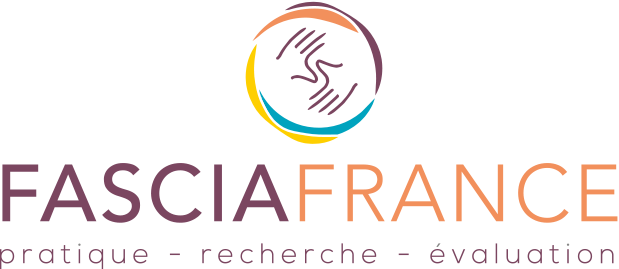Contribution of the use of fasciatherapy in physiotherapy practice : practitioner’s point of view
Auteurs : Christian Courraud PT, PhD, Danis Bois, PhD, Anne Lieutaud, PhD – CERAP (Centre d’Etude et de Recherche Appliquée en Psychopédagogie)
Revue Mains Libres n° 3 – 2016
Résumé :
La fasciathérapie MDB est une thérapie manuelle et gestuelle des fascias issue de l’ostéopathie non manipulative qui sollicite les processus d’auto-régulation à travers un toucher spécifique appelé toucher psychotonique en lien avec la dimension connectée du fascia. Cette approche est pratiquée depuis plus de 30 années par des physiothérapeutes et des ostéopathes.
Peu d’enquêtes étudient les apports des formations en thérapies manuelles sur le développement des compétences et de la pratique clinique du physiothérapeute. Cet article issu d’une enquête sociologique par questionnaire menée auprès de 238 physiothérapeutes français met en évidence les apports de la pratique de la fasciathérapie méthode Danis Bois (MDB) sur l’enrichissement et l’amélioration de la pratique clinique.
Les résultats de cette enquête mettent en évidence que la fasciathérapie enrichit les dimensions thérapeutiques, relationnelles et éducatives du soin. Les apports en matière d’enrichissement de la perception du toucher et du corps du physiothérapeute sont la sensation de profondeur du toucher, la perception de globalité (somatique et somato-psychique) du corps du patient et celle de perception de soi (intériorité, sentiment d’existence, présence) caractéristique du vécu du corps du thérapeute.
La pratique clinique est perçue comme nettement améliorée tant sur la prise en charge de la douleur que de la souffrance psychique. L’efficacité thérapeutique est renforcée principalement sur les pathologies musculo-squelettiques mais aussi sur des pathologies moins familières (maux de tête, troubles viscéraux) ou plus complexes (stress, mal-être).
Cet article ouvre également une voie de réflexion et de recherche sur les apports des thérapies manuelles à la formation continue des masseurs-physiothérapeutes.
Mots clés : fascia, fasciathérapie MDB, physiothérapie, exercice professionnel, identité professionnelle, enquête sociologique
Summary :
DBM Fasciatherapy is a manual and movement therapy of the fascia, which shares principles with non-manipulative osteopathy. The specific touch in use – called psychotonic touch – stimulates a self-regulatory mechanism that can be explained through the connective dimension of the fascia. This approach has been used by physiotherapists and osteopaths for more than 30 years.
Few surveys investigate how manual therapies impact the skill development of physiotherapists and their clinical practice. This article presents some results of a questionnaire-based sociological survey completed by 238 French physiotherapists. It highlights how the practice of Danis Bois Method (DBM) Fasciatherapy enriched and improved their clinical practice.
Results show that DBM Fasciatherapy enriches the therapeutic, relational and educational dimensions of the treatment. Various sense-felt phenomena contribute to the physiotherapists feeling an improvement in their touch-perception as well as in their own body-perception. These are: the sensation of depth of the touch, the perception of wholeness (somatic and somato-psychic) of the body of the patient and a particular type of bodily self-perception experienced by the therapist (inner experiencing, sense of existence, presence).
Clinical practice is seen to clearly improve alleviation of both physical pain and mental suffering. Therapeutic efficacy seems particularly improved on musculoskeletal pathologies, but also on pathologies which are less common in physiotherapy practice (headaches, visceral disorders) or more complex (stress, existential unease).
This article also offers to reflect on new potentials to be found in manual therapies, both in terms of research perspectives and physiotherapist continuing education.
Keywords : Fascia, DMB Fasciatherapy, physiotherapy, professional practice, professional identity, sociological survey
Lien vers l’article : https://www.mainslibres.ch/mains-libres/2016/mains-libres-3-16/apports-de-la-pratique-de-la-fasciatherapie-a-l-exercice-de-la-physiotherapie-le-point-de-vue-des-praticiens

